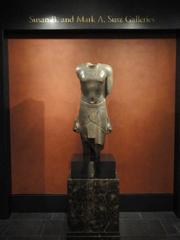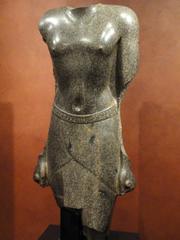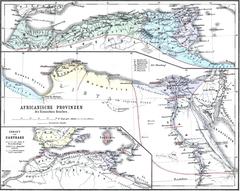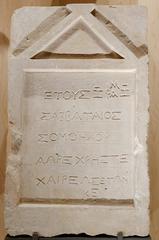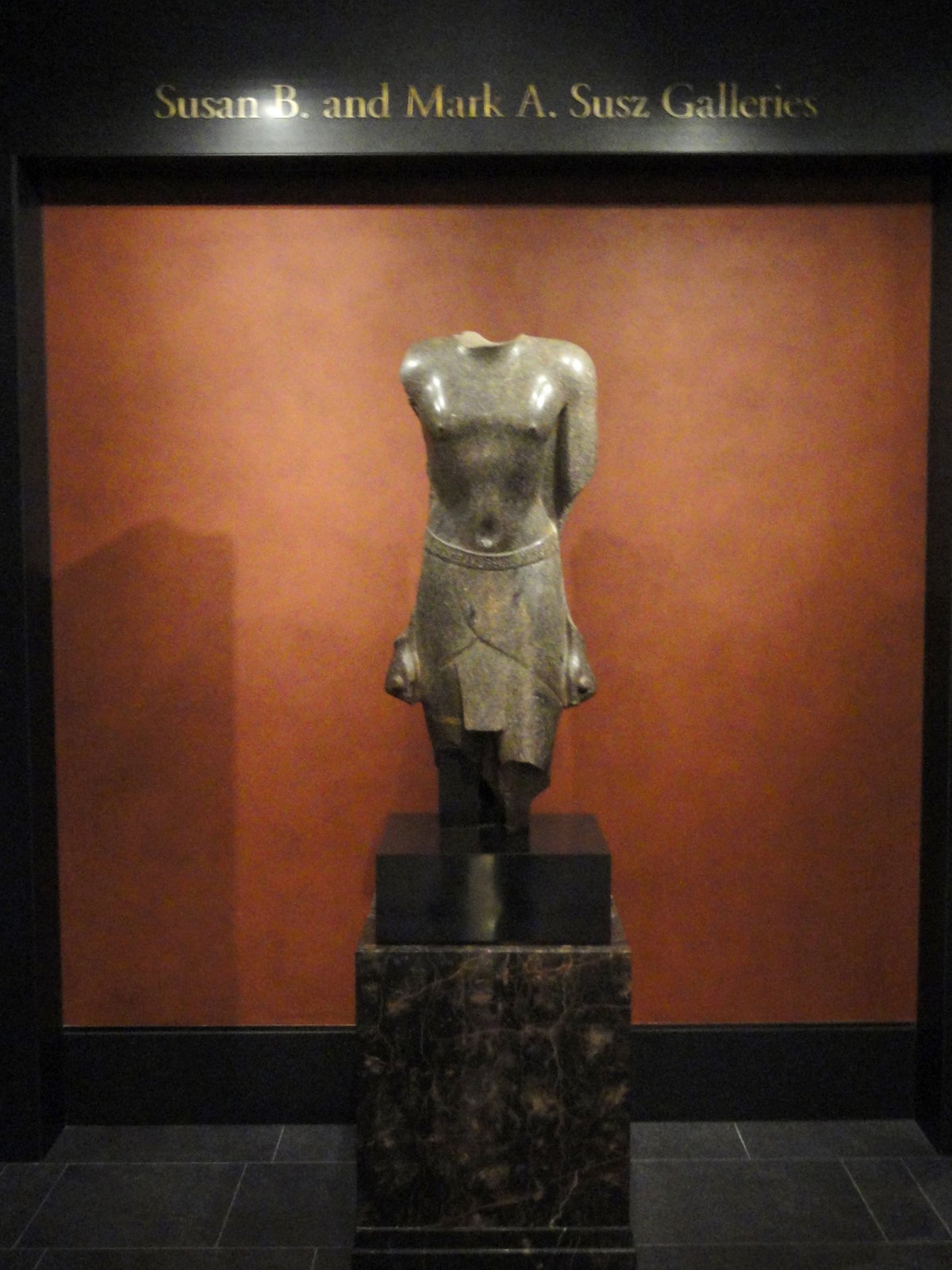
Mendes Markaz Bilqas, Egypt: Visiting Hours, Tickets, and Historical Sites Guide
Date: 14/06/2025
Introduction
Mendes—known in antiquity as Djedet or Per-Banebdjedet—lies in the lush eastern Nile Delta and stands as a remarkable testament to more than 4,000 years of Egyptian civilization. As one of the oldest continuously inhabited urban centers in Egypt, Mendes witnessed dynamic transformations from the prehistoric Naqada II period through the Greco-Roman era. Renowned for its political prominence as the capital during the 29th Dynasty and as a revered cult center of the ram-headed god Banebdjedet, Mendes offers an immersive journey through ancient urban planning, religious practice, and cultural exchange.
Today, visitors can explore monumental temple ruins, an expansive necropolis with unique sacred ram burials, distinct residential areas, and the vestiges of Egypt’s vibrant Delta economy. The site’s proximity to the Coptic Monastery of Saint Demiana and the city of al-Mansurah provides further opportunities to experience Egypt’s layered spiritual and historical heritage.
This detailed guide synthesizes archaeological research, traveler information, and practical tips to help you plan your visit—covering everything from opening hours and ticketing to accessibility and key highlights. For the most current updates, downloadable resources, and interactive maps, consult the Audiala app and official Egyptian tourism platforms (Archaeolist, audiala.com, BMCR).
Table of Contents
- Introduction
- Archaeological and Historical Significance
- Visitor Highlights: What to See at Mendes
- Essential Visitor Information
- Practical Travel Tips
- Artifacts and Museums
- Frequently Asked Questions (FAQ)
- Conclusion and Further Resources
Archaeological and Historical Significance
Origins and Early Development
Mendes’s origins trace back to the Naqada II period (ca. 4000 BCE), with excavations revealing early silos, ovens, and domestic structures that point to a flourishing agricultural community (Archaeolist). By the Old Kingdom (c. 2686–2181 BCE), Mendes emerged as a significant urban center, evidenced by a vast necropolis containing over 9,000 burials (BMCR).
Religious and Political Importance
As the capital of the 16th Lower Egyptian nome, Mendes reached its zenith during the 29th Dynasty (393–380 BCE), serving as Egypt’s national capital. The city was famed as the cult center of Banebdjedet, the ram-god of fertility and kingship, and home to a monumental temple complex modeled on the great processional temples of Thebes. Sacred rams were mummified and buried in the temple precincts, a religious practice unique to Mendes. During the New Kingdom, expansions under Thutmose III and Ramesses II further enhanced the city’s grandeur (BMCR).
Cultural Interactions and International Role
Strategically located in the Delta, Mendes became a cosmopolitan hub, especially during the Ptolemaic era when Greek and Egyptian influences mingled. The city’s decline in the 2nd century BCE was precipitated by environmental changes and the silting of the Mendesian Nile branch, shifting regional prominence to nearby Thmuis (BMCR).
Visitor Highlights: What to See at Mendes
1. The Temple of Banebdjedet
- Ruins and Processional Avenues: Explore the main temple’s pylons, gateways, and processional routes.
- Sacred Lake: Site of priestly purification ceremonies.
- Colossal Ram Statues and Inscriptions: Fragments and stelae from pharaohs such as Nectanebo I and II (audiala.com).
2. Necropolis and Sacred Ram Burials
- Human and Ram Interments: View the extensive burial grounds, including mummified rams—a practice unique to Mendes.
- Elite Tombs: Painted tombs, mastabas, and limestone sarcophagi span from the Old Kingdom to the Ptolemaic era (audiala.com).
3. Residential and Economic Areas
- Workshops and Homes: Evidence of ancient daily life in residential quarters and storage facilities.
- Defensive Remains: Sections of fortification walls reflect the city’s turbulent history.
4. Mendesian Harbor and Economic Hub
- Harbor Remains: Docks, warehouses, and granaries highlight Mendes’s role as a port and trade center.
- Perfume Production: Mendesian perfume was a luxury export during Greco-Roman times (audiala.com).
5. Coptic and Islamic Heritage
- Monastery of Saint Demiana: A vibrant pilgrimage site nearby, reflecting the region’s Christian legacy.
- Early Churches and Mosques: Traces of Coptic and Islamic architecture illustrate the area’s layered history (audiala.com).
Essential Visitor Information
Visiting Hours and Tickets
- Opening Hours: Daily, 8:00 AM to 5:00 PM.
- Tickets: Standard entry is around 100 EGP for foreign visitors, 50 EGP for Egyptian nationals. Discounts apply for students and seniors. Tickets can be bought at the entrance or via official tourism sites (audiala.com).
Accessibility and Site Facilities
- Accessibility: Terrain is uneven with dirt paths and excavation areas; limited wheelchair access. Arrange assistance in advance if needed.
- Facilities: Basic restrooms near the entrance; no cafés or shops on-site. Bring water, snacks, and sun protection (travelyesplease.com, lonelyplanet.com).
Getting There: Transportation and Location
- Location: Near Tell El-Ruba in Markaz Bilqās, about 15 km southeast of Mansoura. GPS strongly recommended.
- Transport: Best reached by private car or guided tour. From Cairo (approx. 2–3 hours), drive or take a train/bus to Mansoura and a local taxi/minibus onward (Memphis Tours, Wikipedia).
Guided Tours and Experiences
- Local Guides: Available on-site or by prior arrangement, providing expert context and stories.
- Audio Guides and Virtual Resources: Enhance your experience with interactive maps and digital content (audiala.com).
Practical Travel Tips
Best Time to Visit and Climate
- Ideal Season: October to April (cooler months, 15–25°C).
- Weather: Hot summers (above 35°C); mild, wetter winters (Odynovo Tours, Travellers Worldwide).
Etiquette and Safety
- Dress Modestly: Shoulders and knees covered, especially in religious sites.
- General Safety: Site is safe; standard precautions apply. Stick to marked paths and avoid touching artifacts (earthtrekkers.com).
- Health: No on-site medical facilities; nearest hospitals in Mansoura. Carry essentials.
Photography, Events, and Local Experiences
- Photography: Permitted, but ask before photographing people or active excavations.
- Events: Occasional festivals and archaeological talks; check with local operators.
- Local Culture: Explore markets in Bilqās and sample Egyptian tea and sweets (audiala.com).
Artifacts and Museums
Many Mendes artifacts—statues, pottery, bronze and faience figurines, decorated sarcophagi, and ancient coins—are displayed at the Egyptian Museum, Cairo, and the Mansoura Museum.
Frequently Asked Questions (FAQ)
Q: What are Mendes’s visiting hours?
A: 8:00 AM to 5:00 PM daily.
Q: How do I buy tickets?
A: Purchase at the entrance or through official tourism websites.
Q: Is Mendes accessible for people with disabilities?
A: Accessibility is limited; contact site management in advance for assistance (Journeyable, Egypt Tours Plus).
Q: What should I bring?
A: Sturdy shoes, sun protection, water, and a camera. Dress modestly.
Q: Are guided tours available?
A: Yes, and they are recommended for a richer experience.
Conclusion
Mendes in Markaz Bilqās is one of Egypt’s most fascinating yet underexplored archaeological sites, offering a profound journey into the depths of Egyptian history. From its grand temple ruins and enigmatic necropolis to its vibrant trading past and enduring religious significance, Mendes invites exploration and discovery.
Careful planning—regarding visiting hours, ticketing, transportation, and site conditions—ensures a rewarding visit. For up-to-date details, interactive tours, and expert insights, download the Audiala app and consult trusted tourism resources.
Experience the wonders of Mendes, and walk in the footsteps of pharaohs, priests, and pilgrims in the heart of the Nile Delta.
References and Further Reading
- Mendes Historical Site: Visiting Hours, Tickets, and What to See at This Ancient Egyptian Treasure, 2025, Archaeolist (https://archaeolist.com/sites/egypt/mendes)
- Visiting Mendes: Exploring the Archaeological and Historical Highlights of Markaz Bilqās – Tickets, Hours, and Travel Tips, 2025, Audiala (https://audiala.com/en/egypt/markaz-bilqas)
- Practical Visitor Information and Accessibility, 2025, Memphis Tours (https://www.memphistours.co.uk/Egypt/Egypt-Travel-Guide/Egypt-information/wiki/Practical-information-about-egypt)
- Mendes Visiting Guide: Hours, Tickets, Tours & Historical Highlights of this Egypt Archaeological Site, 2025, Audiala (https://audiala.com/en/egypt/markaz-bilqas)
- BMCR
- travelyesplease.com
- lonelyplanet.com
- earthtrekkers.com
- Journeyable
- Egypt Tours Plus
- Travellers Worldwide
- Odynovo Tours
- Wikipedia
- Popular Archaeology - Mendes Discoveries
- Archaeolink Volunteer Opportunities
- World Travel Guide
